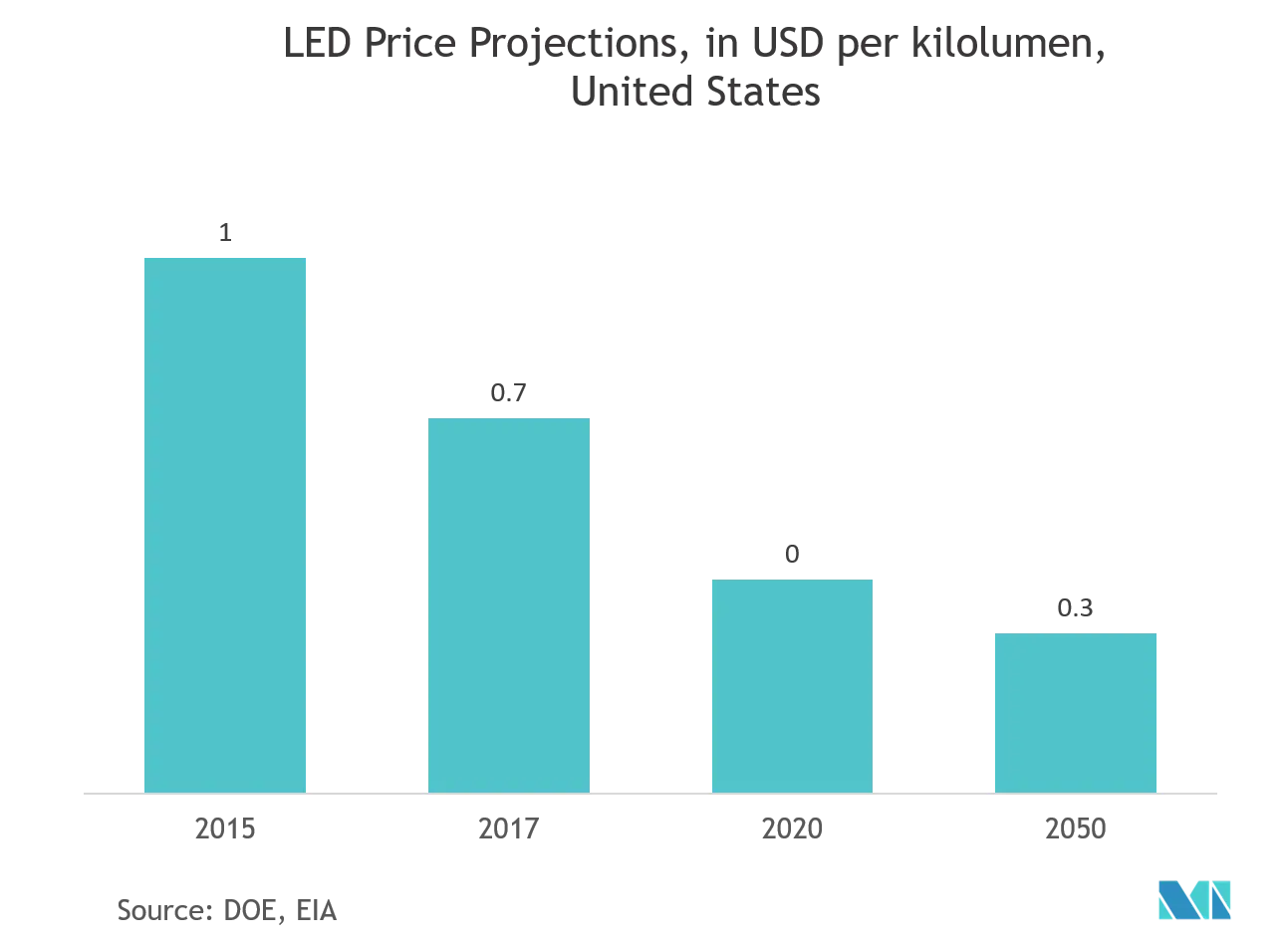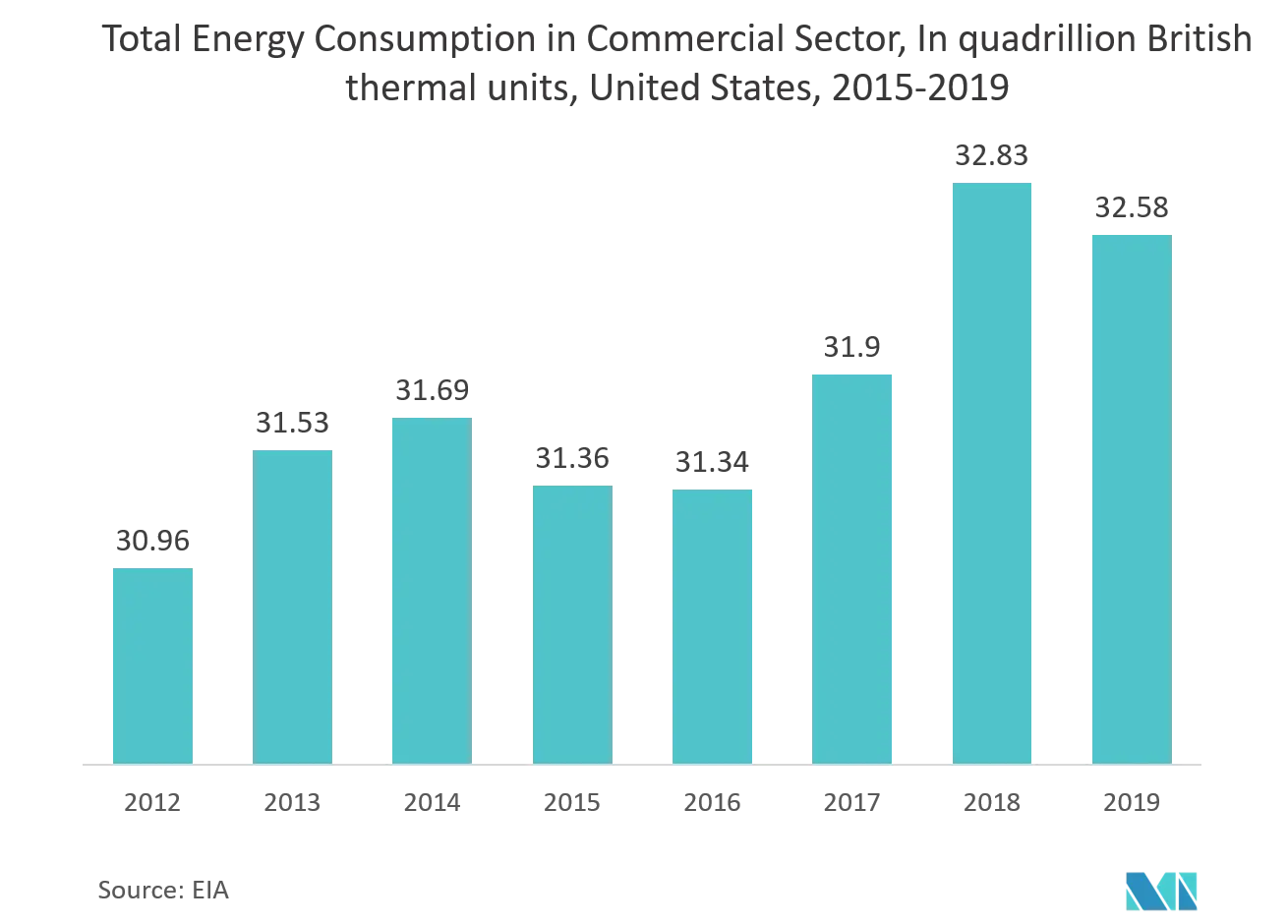Market Trends of US & Europe LED Lighting Industry
This section covers the major market trends shaping the US & Europe LED Lighting Market according to our research experts:
Declining Prices of LED Products is Expected to Foster Growth
- Over the forecast period, the price of LED products is expected to fall to a point where significant savings from electricity consumption will deliver a short payback period, encouraging consumer adoption in mass. This lighting technology shift will significantly change the share of lamps sold for retrofit developments, where older lighting solution is often replaced precisely to improve efficiency.
- According to the Department of Energy and EIA, the price projection for LED in United States is expected to be USD 0.3 per kilolumen.
- According to the Building Technologies Office of the United States Department of Energy, if brand-name effects are ignored as significant price predictors, it has been observed that household LED lamps declined in price by more than 30% per year in the last five years. After controlling the brand-name effects, the price drops to a significant level. They have also found that a portion of the price drop has been driven by intense competition among several brands that have recently entered the market.
- After cumulative production doubles and redoubles rapidly in the recent years following introduction for new technology-enabled products, and significantly slow for mature products, relatively rapid price drops are generally predicted for new technologies such as energy-efficient LED lights.

United States Expected to Dominate the Market
- Governments across the United States are investing in smart and adaptive lights to improve energy efficiency. For instance, Chicago has launched a lighting program that aims to install 270,000 LED lights over the course of four years. During the first year of the project, the city installed 81,000 LED lights. Chicago estimates that it will save around USD 10 million each year in utility costs. The project includes a monitoring and control system that immediately alerts the city of any outages. It also allows workers to optimize the performance of the LED lights.
- Through significant partnerships with government authorities and players operating in the ecosystem, the market has been observing some opportunities in the recent years. For instance, in June 2020, the New York Power Authority (NYPA) entered into a partnership with Signify, one of the major players in lighting, to support Smart Street Lighting NY. It is a state-wide program that calls for at least half a million lights throughout the state to be replaced with energy-efficient LED technology by 2025.
- Several cities across the globe have already experienced savings from street & roadways lighting programs. For instance, New York City (United States) is replacing its 250,000 streetlights with high-efficiency LEDs. It estimates it will save USD 6 million in energy costs and USD 8 million in maintenance costs annually.
- Cities are increasingly investing in energy-efficient street lighting systems to replace or enhance their outdated systems. While reliable and bright public lighting reduces accidents and crime and allows for economic activity after sunset, modern energy-efficient street-lighting technology can also lower energy consumption as well as operation and maintenance costs significantly.
- Furthermore, various government initiatives are leading to a higher adoption of LED lighting, which is catering to the market growth of lighting as a service. During 2019, the Trump administration announced it plans to use much more energy-efficient light bulbs to reduce the energy consumption rate and to help in controlling carbon emission, that primarily gets generated in the United States from natural gas-powered plants for electricity generation. As per the plan, all light bulbs sold in the United States must be either LED or fluorescent to meet energy standards.

